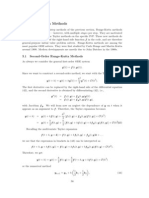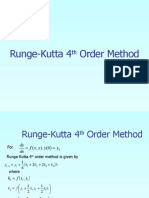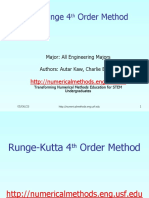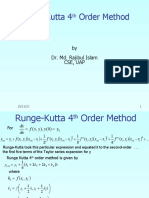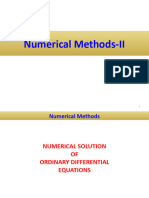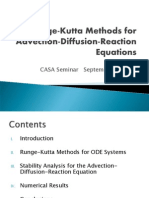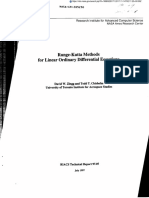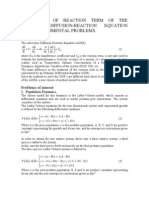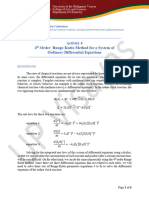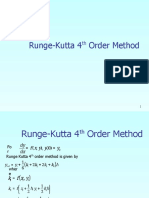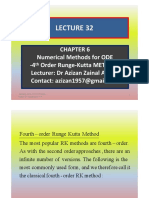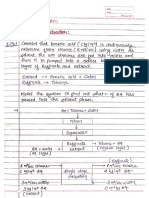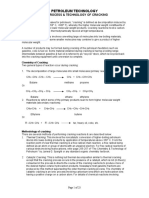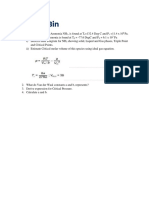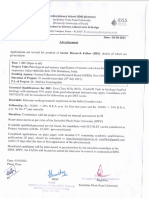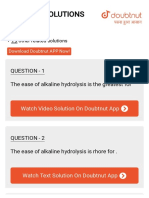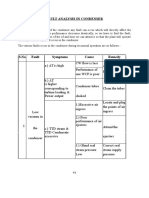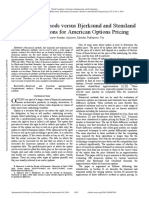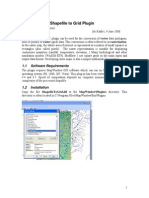0% found this document useful (0 votes)
513 views6 pagesHolistic Numerical Methods
This document provides an example of using the 4th order Runge-Kutta method to solve an ordinary differential equation modeling the concentration of salt in a tank over time. The method is applied with different step sizes to calculate the salt concentration at 3 minutes. Tables and figures show that decreasing the step size improves the accuracy of the numerical solution compared to the exact solution. The document also compares the 4th order Runge-Kutta method to lower order Runge-Kutta methods.
Uploaded by
Ohol Rohan BhaskarCopyright
© © All Rights Reserved
We take content rights seriously. If you suspect this is your content, claim it here.
Available Formats
Download as PDF, TXT or read online on Scribd
0% found this document useful (0 votes)
513 views6 pagesHolistic Numerical Methods
This document provides an example of using the 4th order Runge-Kutta method to solve an ordinary differential equation modeling the concentration of salt in a tank over time. The method is applied with different step sizes to calculate the salt concentration at 3 minutes. Tables and figures show that decreasing the step size improves the accuracy of the numerical solution compared to the exact solution. The document also compares the 4th order Runge-Kutta method to lower order Runge-Kutta methods.
Uploaded by
Ohol Rohan BhaskarCopyright
© © All Rights Reserved
We take content rights seriously. If you suspect this is your content, claim it here.
Available Formats
Download as PDF, TXT or read online on Scribd
/ 6



